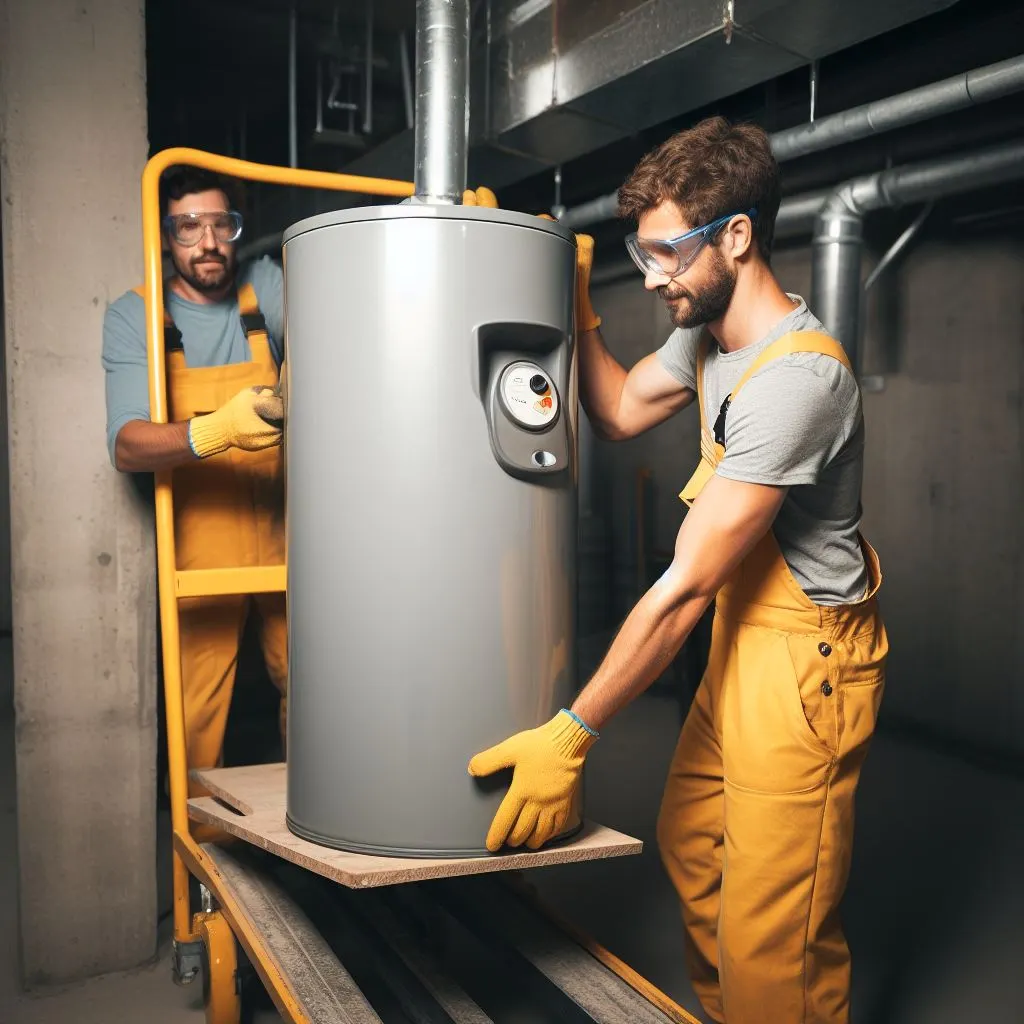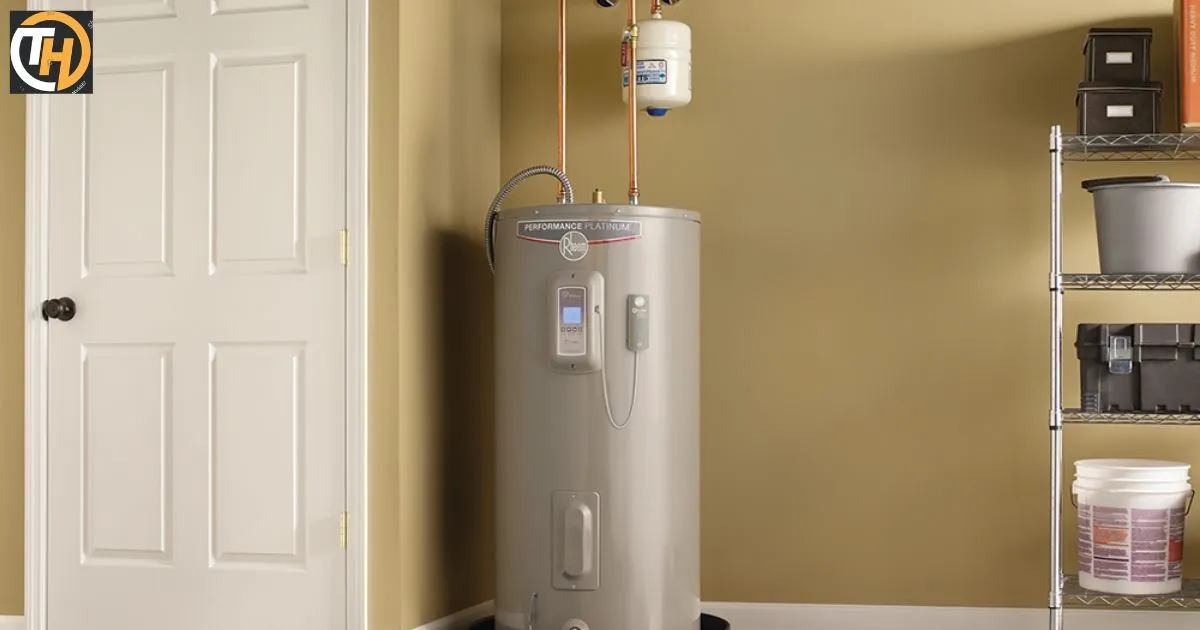When it comes to installing a hot water heater, orientation matters. Most commonly, water heaters are installed in a vertical position, but have you ever wondered if it’s safe or practical to lay a hot water heater down horizontally? In this article, we’ll explore the various aspects of water heater orientation, discuss the safety and feasibility of laying down a water heater, and provide guidelines for proper handling and installation.
Whether you’re planning a new water heater installation or considering repositioning an existing one, understanding the implications of its orientation is crucial.
Understanding Water Heater Orientation
Water heaters typically come in two main types: tank-style and tankless. Tank-style water heaters have a cylindrical tank that stores and heats water. These tanks are usually designed for vertical installation, with water inlet and outlet connections at the top. Tankless water heaters, on the other hand, are more compact and can be installed both vertically and horizontally.
Laying Down a Water Heater: Is it Safe?
Laying down a water heater is a topic that warrants careful consideration when it comes to safety. It can indeed be a safe choice, but it’s essential to weigh several crucial factors. These include the type of water heater, its specific design, and the recommendations provided by the manufacturer.
In general, tank-style water heaters are not ideally suited for horizontal installation, and here’s why. When you lay down a tank-style water heater horizontally, it departs from its intended design, which can potentially introduce safety risks and operational challenges.
Considerations for Horizontal Installation
When considering laying down a water heater, especially a tank-style unit, several factors need to be addressed:
- Type of Water Heater: As mentioned earlier, tankless water heaters are more suitable for horizontal installation.
- Manufacturer’s Guidelines: Always consult the manufacturer’s instructions and guidelines regarding the water heater’s orientation.
- Flammable Vapor Ignition Resistance: Some gas water heaters are equipped with safety features that prevent the ignition of flammable vapors. Laying these units down can compromise this safety feature.
Proper Handling and Transportation
If you’ve decided to lay down your water heater, proper handling and transportation are essential. Here are some tips:
- Secure Transportation: Ensure that the unit is adequately secured during transportation to prevent damage.
- Protective Padding: Use appropriate padding and protection to shield the water heater from bumps and impacts.
- Avoid Tipping: Be cautious when moving the unit to prevent tipping or jolting.
Installation Guidelines
When opting to install a water heater in a horizontal position, it’s essential to adhere to specific guidelines to ensure a safe and effective installation. These guidelines include:
Proper Support: The water heater must be adequately supported and kept level when placed horizontally. Adequate support helps prevent any shifting or instability, ensuring the unit remains secure in its new orientation.
Secure Venting: It’s crucial to check the venting system of the water heater to ensure it functions correctly in the horizontal position. This includes examining the exhaust and intake pipes to verify that they remain properly aligned and unobstructed.
Plumbing Adjustments: Plumbing connections should be adjusted as needed to align with the horizontal orientation of the water heater. This may involve repositioning or modifying the inlet and outlet connections to accommodate the new configuration.
When Not to Lay Down a Water Heater
While horizontal installation can be suitable for certain situations, there are times when it’s best to avoid laying down a water heater. These include:
- Gas Water Heaters with Flammable Vapor Ignition Resistance: Laying them down can compromise safety.
- Manufacturer’s Recommendations: If the manufacturer advises against horizontal installation, follow their guidance.
Benefits of Laying Down a Water Heater

Let’s explore the potential benefits of horizontal water heater installation:
Space Saving: One of the primary advantages is space conservation. Laying down a water heater creates a lower profile, which can be particularly beneficial in areas with limited overhead clearance or unconventional spaces where a vertically installed unit may not fit comfortably.
Improved Accessibility: A horizontally installed water heater can enhance accessibility for maintenance and servicing. It simplifies tasks such as routine inspections, repairs, and component replacements, as they can be more conveniently performed when the unit is positioned horizontally.
Flexible Placement: Horizontal orientation provides flexibility in selecting installation locations. It allows for under-the-counter or floor-level placements, enabling homeowners to optimize space and integrate the water heater within cabinetry or other fixtures seamlessly.
Suitability for Specific Environments: Certain settings, such as crawl spaces or utility closets with space limitations, benefit from horizontal water heater installation. This configuration can conform to the available space while maintaining essential functionality.
Uniform Load Distribution: By laying the water heater down, the weight is more evenly distributed over a broader surface area, reducing stress on structural components. This distribution can be advantageous for floors and platforms that might not support the concentrated weight of a vertically installed unit.
Alternative Installations: In areas where vertical installation is not feasible due to structural constraints or architectural limitations, a horizontally oriented water heater can serve as a viable alternative, ensuring hot water access without major structural modifications.
Space Saving
Horizontal installation of a water heater, such as a tankless water heater, is primarily known for its space-saving advantages. Traditional vertical installation, especially for tank-style water heaters, often consumes a significant amount of vertical space. However, by opting for a horizontal orientation, you can maximize the available space in tight or unconventional areas, such as a closet, where a tankless water heater can be installed efficiently.
Improved Accessibility
Another noteworthy benefit of a horizontally installed water heater is the improved accessibility it offers for maintenance and service. In a traditional vertical setup, accessing various components of the water heater, such as the heating elements, valves, or temperature controls, can be challenging due to the height of the unit.
Potential Risks and Challenges
Two primary areas of concern are safety and maintenance complexity.
Safety Concerns: If the horizontal installation is not executed correctly or if the manufacturer’s guidelines are not followed diligently, laying down a water heater can result in safety hazards. Potential risks include issues with combustion gases, increased exposure to flammable materials, and the possibility of leaks or damage that may compromise the heater’s safety features.
Maintenance Complexity: Another challenge is the added complexity in performing maintenance tasks on a horizontally oriented water heater. Tasks such as inspecting and servicing the unit may become more challenging due to the altered orientation.
Maintaining a Laid-Down Water Heater
Here’s a closer look at how to properly maintain a water heater in a horizontal orientation:
Regular Inspections
Frequent visual inspections of the water heater are essential to identify any signs of wear, corrosion, or potential issues. Check for leaks, rust, or unusual noises that may indicate a problem. It’s recommended to perform these visual checks at least once a month to catch any issues early.
Cleaning
Dust, dirt, and debris can accumulate more readily on a horizontally installed water heater, as it may be closer to the ground. Regularly clean the unit and its surrounding area to prevent dust and debris from affecting its performance. Keep the area around the water heater clear to maintain proper airflow and prevent obstructions.
Safety Measures
Always follow safety guidelines when performing maintenance tasks. Turn off the power and gas supply to the water heater before conducting any inspections or repairs. Ensure that the water heater is cool before touching any components.
Component Accessibility
One of the advantages of a horizontally laid-down water heater is improved accessibility to critical components. Take advantage of this accessibility to check and maintain elements such as the heating elements, thermostats, and pressure relief valves. Ensure that all connections are secure and free from leaks.
Flushing
Periodically flush the tank to remove sediment buildup, which can affect the efficiency of the water heater. Follow the manufacturer’s recommendations for flushing frequency and procedures.
Professional Servicing

Consider scheduling professional servicing at least once a year to ensure that the water heater is in optimal condition. Professional technicians can perform thorough inspections and maintenance tasks, including adjusting the venting system and assessing the overall performance of the unit.
| Aspect | Consideration |
| Water Heater Type | Tank-style vs. Tankless |
| Safety Concerns | Gas water heaters with flammable vapor ignition resistance |
| Manufacturer’s Recommendations | Space-saving improved accessibility |
| Benefits of Laying Down | Space-saving, improved accessibility |
| Potential Risks and Challenges | Safety concerns, maintenance complexity |
| Maintenance Guidelines | Regular checks, inspections, cleaning |
FAQs
Can I transport a water heater lying down?
Yes, but secure it to prevent damage.
Can hot water heaters sit on the floor?
Yes, with proper safety and ventilation considerations.
What do you put under a hot water heater?
Use a suitable stand or platform for stability and ventilation.
What position should a water heater be in?
Position depends on the type, following manufacturer’s recommendations and safety guidelines.
Conclusion
In conclusion, the orientation of a water heater is an important consideration. While laying down a water heater can be practical in specific situations, it’s crucial to evaluate factors such as the type of water heater, manufacturer’s recommendations, and safety concerns. Proper installation, maintenance, and adherence to safety guidelines are key to successfully laying down a water heater when it’s appropriate.
Making informed decisions ensures the safety and efficiency of your water heating system. Laying down a hot water heater can be a practical solution in specific scenarios, but it’s essential to consider the type of water heater, manufacturer’s recommendations, and safety factors. Proper installation, maintenance, and adherence to safety guidelines are key to successfully laying down a water heater when it’s appropriate.











